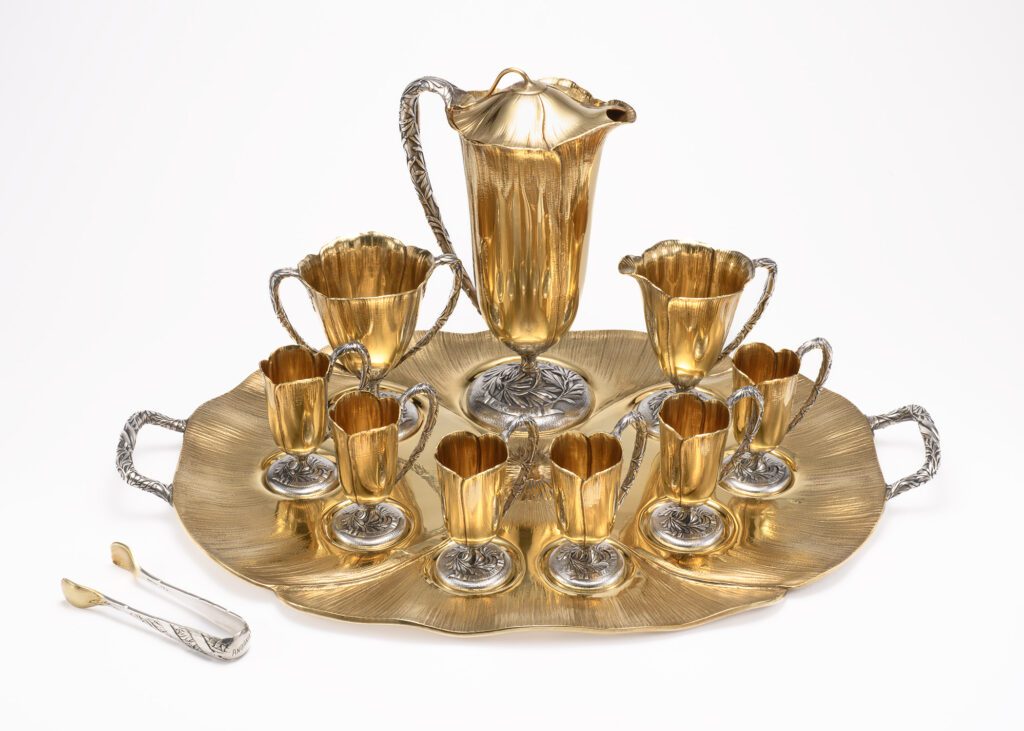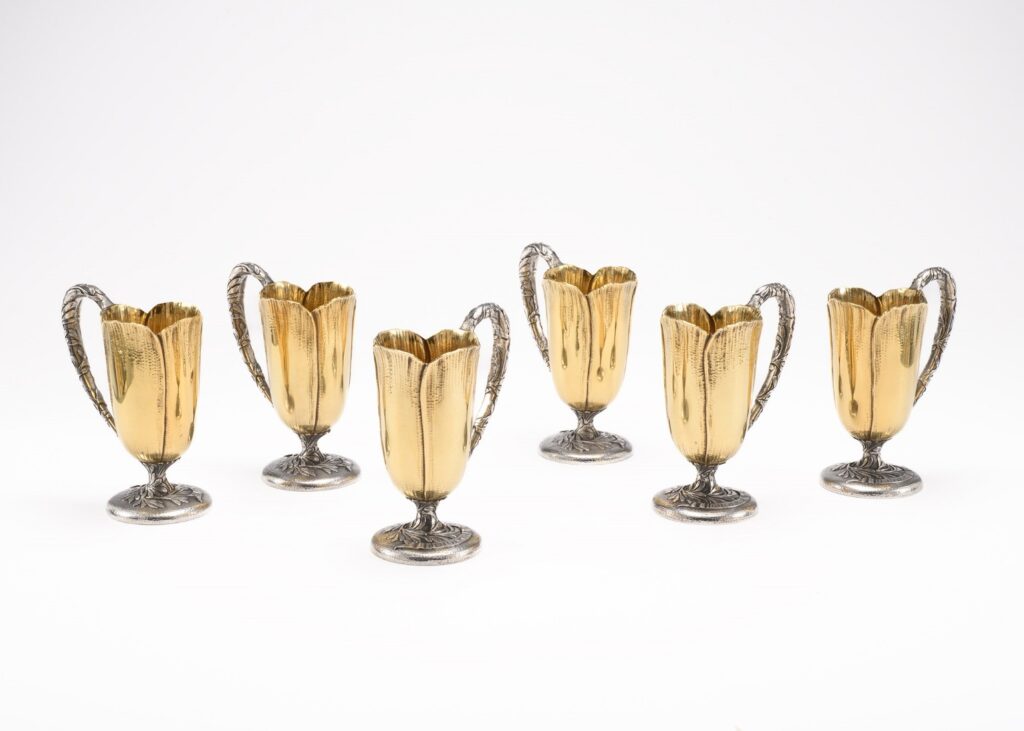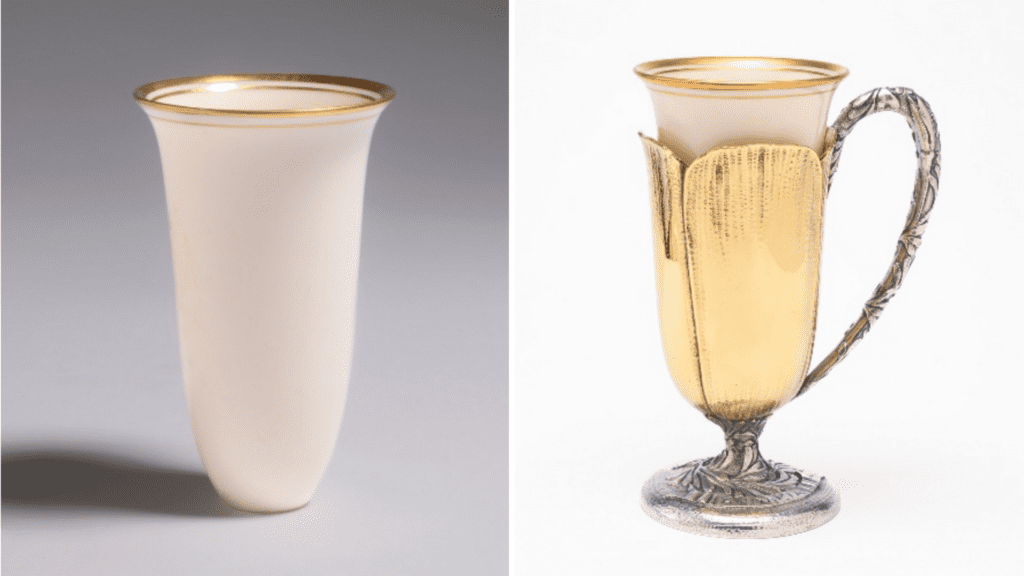By Ann Wagner

Abstaining from hot chocolate should never be a New Year’s resolution!
It’s a new year, and we are welcoming a new addition to our collection. Winterthur recently acquired a one-of-a-kind, gilded silver hot chocolate set with dainty poppy-shaped vessels, made in 1915. While this set does not represent how most consumers sipped hot cocoa in the early 1900s, and certainly not today, antique ceramic and silver chocolate pots remind us how internationally revered this beverage has been throughout its multi-century history. Hot chocolate came to America in the 1600s, and when this set was new, tins or boxes holding cakes of powdered cacao were combined with hot milk and sweetened to taste with sugar. Yum!

This illustrated trade card for Wilbur’s Chocolate Company features Cupid sipping from a gilded white porcelain cup and saucer—likely enjoying the Breakfast Chocolate in the bright blue box behind his head.

Porcelain cups and ceramic mugs are ideal for protecting the lips from that first scalding sip, but the chocolate set we acquired has six silver poppy cup frames with no liners. It is hard to imagine adults drinking from such tiny openings, which seem more to scale for the fairies inhabiting Winterthur’s Enchanted Woods. A porcelain liner creates a fluted opening more apropos for a human and adds another insulating layer to preserve the chocolate’s heat while shielding the lips.
Cup frames of sterling silver, silver electroplated with gold, or silver-plated base metals were not uncommon products in the early 1900s. However, while Europeans drank their hot beverages from a clear glass placed in a metal frame, Americans drank theirs from white porcelain liners set in metal cup frames. This set’s maker, Gorham Manufacturing Company (headquartered in Providence, Rhode Island), worked with Trenton, New Jersey manufacturer Lenox Ceramic Art Company to craft a liner reflecting the American-style hot beverage drinking glass: gold-rimmed white porcelain liners fitted to their coffee, tea, and hot chocolate cup frames.

Although our poppy cup frames no longer contain their original liners, Gorham’s early 1900s sales catalogues survive to help us imagine them. This page shows a chocolate cup and two teacups from the 1908 Catalogue Addenda and was shared by a silver scholar who sourced it in the Gorham Archives, John Hay Library, Brown University.
Since the hot chocolate set we acquired was created as a special order for Anita Baldwin, owner of the historic estate, Anoakia, of Arcadia, California, it never appeared in the Gorham catalogues. Our chances of finding an antique liner with the cups’ exact dimensions were close to zero.

However, we wanted to display these poppy cup frames with a Lenox liner, so a near match was located with this narrow demitasse shape. It extends about one inch above the frame, and you can see how the liners visually complete the set’s overall design. We are delighted to welcome this lovely set into our ever-growing collection. As you gaze at each of its components, you realize that even in small doses the irresistible smell and taste of hot chocolate was a prized indulgence a century ago – just as it is today.
Henry Francis du Pont was an avid collector of American art and antiques representing the finest craftsmanship and styles of early America, and we invite you to come to Winterthur and enjoy our vast collection of treasures like this elegant hot chocolate set. And, of course, to continue to enjoy hot chocolate the way you like it best!